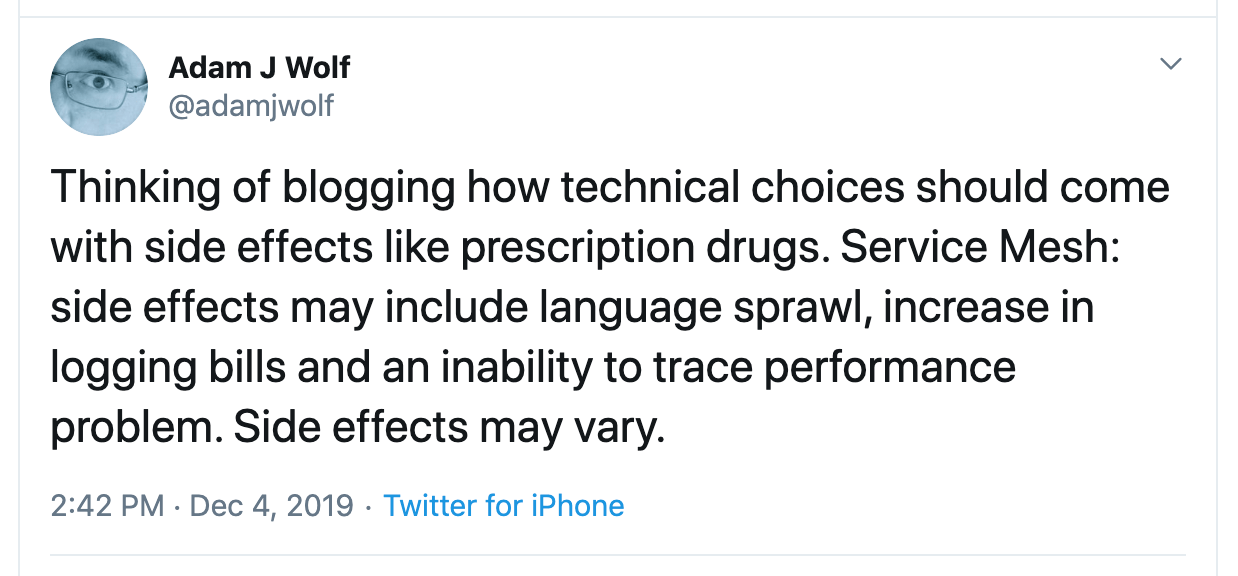Architecture Rx

Do you watch television in the US? If you do, then you have heard commercials for prescription drugs. You know the ones I am talking about. They're the ones where they talk about how great life is when you start taking it and at the end they talk fast in low whispers of side affects and dangerous possible interactions.
Side Effects
Well, I was thinking the other day, and tweeted, that technology choices should come with a side effect disclosure like prescription drugs. That way you could weigh the upside, the downsides and more importantly, the possible interactions.

We have all seen presentations or blog posts of someone gushing over a technology choice and that life is grand after you start using it, but they rarely talk about how the choice can negatively affect the rest of the systems and the organization, days, weeks, months or even years afterwards. Not only that, they almost always give no advice on when it is appropriate to start thinking about using it. If you have less than 50 developers, Microservices make little sense.
OMG, I shot the "Microservices" hotness in the first post! Where will I go from here? Keep reading to find out. 🤓
I am certainly guilty of doing this. Gosh, I was all in on Siverlight, you remember that fiasco! How embarrassing. Technology choices have consequences, interactions and possibly dangerous side effects and it's time we all understood what they are or could possibly be. Don't get me wrong, I love a little resume driven development like the rest of you; but come on, we have to do what's right for the business and our customers first, resume a distant twelfth.
The Series

So each Architecture Rx in this series will have both sides of the argument, pro's and con's, so to speak; and you, dear patient, can make an informed decision on whether to take the red pill, the blue pill, or no pill at all. You should think of me as your Dr. Architect.
